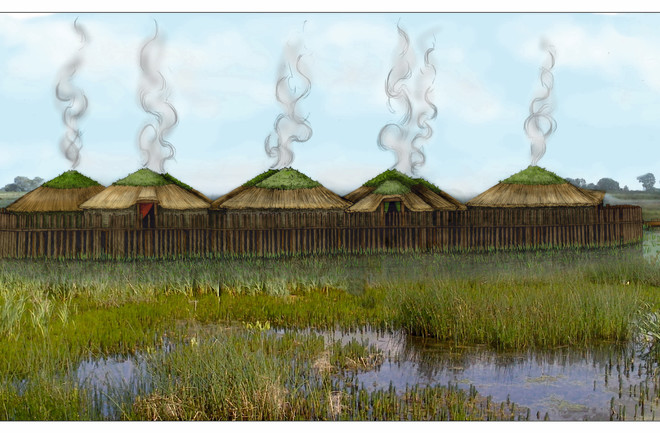Ancient English villagers who lived on platforms about six feet above a river enjoyed the high life, according to two new reports published by the University of Cambridge.
The reports on “Must Farm,” which was excavated 2015-16 by the Cambridge Archaeological Unit (CAU), creates a nearly cinematic image of household comfort there in the Late Bronze Age. Capturing the scope, scale, shape, and size of the settlement, it includes close-ups of hundreds of objects used in daily life.
“Conducting research on Must Farm is a bit like getting an estate agent’s tour of a Bronze Age stilt house,” David Gibson, report co-author and Archaeological Manager at CAU, said in a press release.
Ancient Life in ‘British Pompeii’
Archaeologists could reconstruct these households since the detailed “blueprint” was so readable due to the marshy location that preserved it. The site, about 75 miles northwest of London, drew the ‘British Pompeii’ moniker because, after a fire about a year after the village was built, the platforms holding it sunk into the riverbed. Mud cushioned, then conserved the platforms. The muck also preserved items ranging from tools to foodstuffs.
It's one of the largest domestic assemblages ever found in the U.K. from that period. Items include 128 pottery vessels, 18,216 structural timbers, 155 charred plant fibre artifacts, 198 wooden and bark artifacts, 95 pieces of metalwork, and 56 beads. The items and the study paints a picture of folks who had adapted well to a challenging place to settle.
“These people were confident and accomplished home builders. They had a design that worked beautifully for an increasingly drowned landscape,” Mark Knight, report co-author and excavation director, said in a press release.
That design emphasized comfort. The roundhouse roofs were insulated with straw, topped by turf, and waterproofed with clay. That combination kept the inhabitants warm and dry, but still well ventilated.
“In a freezing winter, with winds cutting across the Fens, these roundhouses would have been pretty cozy,” says Chris Wakefield, CAU project archaeologist.
Read More: Which Ancient City Is Considered the Oldest in the World?
What the Must Farm Bronze Age Settlement Homes Describe
The amount and quality of household items provides a detailed look at life in the village. One area appeared dedicated to storing metal tools and another to textile work, because the excavation revealed cloth fragments, bobbins, and loom weights.
“Entering these houses, you would have seen a rich selection of material, from stacks of pots and wooden troughs filled with their contents to a cluster of young sheep being kept in one corner. People would have been working on making textiles and possibly feeding some leftovers to one of their pet dogs,” says Wakefield.
Read More: Unusual Parasites Plagued Bronze Age Fen Folk And Their Dogs
Analyzing the Must Farm Artifacts
Over 50 archeological specialists used a variety of scientific techniques to examine the artifacts. For example, a pottery bowl with its maker’s fingermarks still held traces of their final meal: a wheat-grain porridge mixed with animal fats.
“Chemical analyses of the bowls and jars showed traces of honey along with ruminant meats such as deer, suggesting these ingredients were combined to create a form of prehistoric honey-glazed venison,” says Wakefield.
Scientists estimated the season the village burned by examining the size — and thus age — of lamb skeletons. And they determined that the village was relatively new, because much of the wood used to build it was still green.
The archeologists couldn’t determine how the fire started, but the details they gleaned illustrated vividly how life was lived during its brief run.
Read More: 5 of the Most Unique and Luxurious Bronze Age Artifacts
Article Sources
Our writers at Discovermagazine.com use peer-reviewed studies and high quality sources for our articles, and our editors review for scientific accuracy and editorial standards. Review the sources used below for this article:
University of Cambridge. Must Farm pile-dwelling settlement: Landscape, architecture and occupation.

